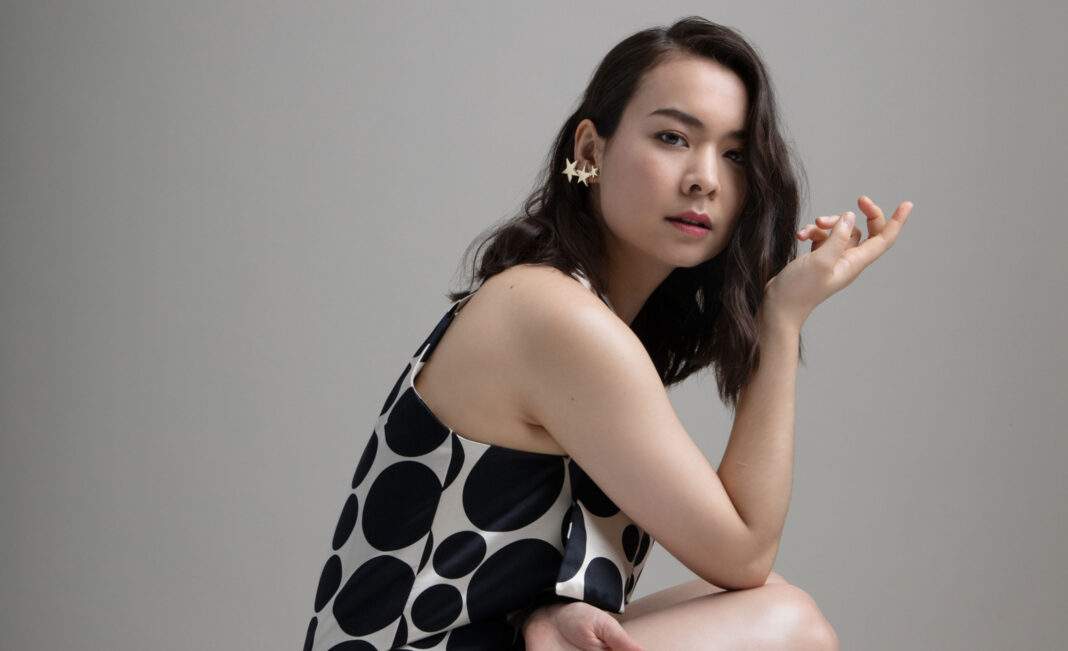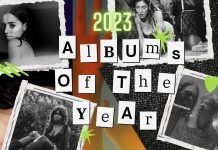TikTok has long been a scapegoat for everything that’s ‘wrong’ with young people today. From shortening attention spans to dangerous challenges to fast fashion micro trends – apparently, TikTok is responsible for them all.
Now, the app is being blamed for the ‘TikTokification’ of music, but not only by adults who don’t understand it. Urban Dictionary defines ‘TikTokification’ as, “A song that was once amazing is now the worst thanks to TikTok.” While it’s true that trending music can get stuck in your head until you can’t bear to listen to your favourite song anymore, the complaint also reveals an online discourse that treats fans who discover music through TikTok as less authentic and respectful than fans who discover it elsewhere.
“The tiktokification of mitski clairo phoebe bridgers lucy dacus etc has been the worst thing to happen in the history of the entire world,” reads one tweet. Further tweets in the thread refer to how fans have behaved at recent Mitski and Clairo concerts. As tours kick back into gear post-pandemic, excitement about seeing favourite artists live is at an all-time high. Consequently, some fans have got carried away and their behaviour is facing backlash online.
In one video from a Clairo gig, a fan shouts “You’re so hot!” after she has performed ‘Blouse’, a song about being sexualised by music producers. Clairo, who apparently asked fans not to shout at her during her gigs, looks visibly upset. When she announced that she would be taking a break from touring on 7 March, fans suggested that audience behaviour was part of the reason. Last month, Mitski asked fans not to use flash photography at her gigs and suggested the crowd might all enjoy the moment more if they didn’t spend the whole concert recording on their phones. The tweet received so much trolling and hate that it was deleted.
Lockdown has increased parasocial relationships between fans and artists, creating an intimate one-sided kinship that can border on obsession. Lack of social contact exacerbated the already obsessive nature of teenage fandom, making it easier than ever to over-relate to artists when some weeks involved doing little else other than listening to their music on repeat. TikTok helped facilitate this, but whichever social media platform had dominated during lockdown would have done the same.
The ‘TikTokification’ of music isn’t new. It’s Stan culture repackaged. The same behaviours have existed on Twitter for years and fans talked about artists in a similar way on Tumblr. Even before social media, fans were known for acting erratically at concerts. When The Beatles stopped touring in 1966, it was partly over concerns for their personal safety and an inability to hear their own instruments above screaming fans. Then, as now, new technology was blamed for this hysteria. Some claimed that television accelerated Beatlemania as fans watched other fans at concerts on TV then imitated them.
However, blaming TikTok for this behaviour today punches down to teenage fans, some of whom admittedly overstep boundaries from time to time, but who are not largely responsible for the sexualisation and commodification of women in music that Clairo explores in ‘Blouse.’ It’s worth noting that most of these artists are openly LGBTQ+ and so are many of their fans. Fan culture has always been about shared identity and bringing people together, even more so for young LGBTQ+ people.
When her song ‘Sofia’ went viral on TikTok, Clairo celebrated the success of a non-heteronormative track being heard by so many young people. For many queer teens, she’s a role model who has helped them find their community and a language with which to articulate their sexuality. Male and female artists have always been sexualised by the media and fans alike and for many teens of all sexualities, their favourite musicians are one of the first ways they learn to make sense of their sexuality and desires. It’s not surprising then that this can sometimes verge on creepy or disrespectful behaviour.
When TikTok isn’t deifying or sexualising these artists, it’s focusing on aesthetics and vibes. Sometimes their music is flattened into the ‘sad girl’ or ‘female manipulator’ archetype. “The sad girl thing was reductive and tired like 5-10 years ago and it still is today,” Mitski told Crack Magazine earlier this year. “Let’s retire the sad girl schtick. It’s over. Sad girl is over.” Tumblr birthed the contemporary sad girl with its fan culture mirroring TikTok’s today. Artists like Marina and the Diamonds and Lana Del Rey were reduced to soft grunge sad girl vibes blogs. In fact, Lana Del Rey has also been heavily ‘TikTokified’ with users making rockstar girlfriend or Lolita-esque montages set over her unreleased tracks.
There is a tension between fans who found their favourite artist through a TikTok trend or moody aesthetic clip compared to those who discovered them elsewhere. Last week, when Phoebe Bridgers’ UK tour sold out almost immediately, fans on Twitter complained about ‘TikTok fans’ getting tickets instead of them, positioning ‘TikTok fans’ as different from ‘real fans.’ Bridgers put it best herself when she said, “I think hating TikTok and social media is classist. It’s just how kids connect to music. So what if someone found music on TikTok? It’s accessible and it’s a community of people showing each other something.”
TikTok has accelerated the success of already successful artists and, unsurprisingly, the artists themselves aren’t annoyed about it. “My friends keep sending me ways that my song ‘Nobody’ has been used on TikTok,” said Mitski. “TikTok has been very good to me. I don’t know what I did to deserve it. People have continued to use my songs on TikTok. Thank you TikTok. Thank you teenagers… I really, really appreciate your use of my music.” Having an issue with TikTok as a fan just feels like old-fashioned gatekeeping and elitism. If someone likes an artist enough to pay to see them live, it’s unlikely the only time they heard their music was during the ‘Nobody’ trend on TikTok.
In many instances, the word ‘TikTokification’ oversimplifies complex issues, such as the relationship between fans and artists, by rooting them in TikTok and the young people who use it rather than looking at the wider socio-cultural and music industry factors. In fact, social media could be the solution to these problems. Artists can now address fans directly, setting boundaries with them and explaining how they feel. In turn, fans can hold each other accountable and have an open dialogue about what is and isn’t acceptable. We’ve already seen this happening with the Clairo clip. ‘TikTokification’ is a new word, but it describes a culture that has existed for a long time, both on and offline. Blaming the app for everything is lazy and elitist. Instead of living in fear of the day our favourite artist becomes ‘TikTokified’, we should be asking ourselves about the line between adoration and obsession and work to create a live music culture of mutual respect because musicians aren’t memes and what’s acceptable online doesn’t always translate in real life.







